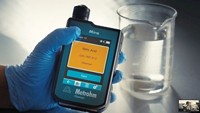Advertisement
Grab your lab coat. Let's get started
Welcome!
Welcome!
Create an account below to get 6 C&EN articles per month, receive newsletters and more - all free.
It seems this is your first time logging in online. Please enter the following information to continue.
As an ACS member you automatically get access to this site. All we need is few more details to create your reading experience.
Not you? Sign in with a different account.
Not you? Sign in with a different account.
ERROR 1
ERROR 1
ERROR 2
ERROR 2
ERROR 2
ERROR 2
ERROR 2
Password and Confirm password must match.
If you have an ACS member number, please enter it here so we can link this account to your membership. (optional)
ERROR 2
ACS values your privacy. By submitting your information, you are gaining access to C&EN and subscribing to our weekly newsletter. We use the information you provide to make your reading experience better, and we will never sell your data to third party members.
Business
Electronic Channels
Companies Offer Many Ways To Learn About, Use, And Purchase Consumables
by Ann M. Thayer
November 28, 2011
| A version of this story appeared in
Volume 89, Issue 48

Mobile technology is starting to put product information in researchers’ hands literally through smartphones and tablets that are now appearing in labs. And instrument suppliers are creating software applications, or apps, to help customers search for and use reagents and consumable products.
Agilent Technologies has apps for calculating liquid and gas chromatography parameters to determine equipment setups. Likewise, Thermo Scientific has a GC column selector tool. And Waters has a part selector app that allows users to select ultra-performance LC sample plates, vials, filters, and columns. Once users find a desired configuration, they can save or e-mail it, or place an order.
In biosciences, Life Technologies has mobile apps for cell imaging and viewing; plotting and comparing spectra; and calculating common scientific parameters. Merck Millipore has an app for finding filters and another for finding data and research reagents for histone modification and epigenetics research. Another app allows customers to view its EMD Chemicals catalog, with supporting product documents and pricing.
Aggregated information on commercially available chemicals is accessible through Eidogen-Sertanty’s MObile REagents app, which integrates with the firm’s other chemistry apps. The MORE app covers about 6 million compounds from more than 50 suppliers. Chemical structure searches are possible through a mobile device’s camera and the app’s optical structure recognition capability. And by using mobile devices’ ability to scan and print bar codes, Eidogen-Sertanty is trying to enable local inventory management.
Although ubiquitous in everyday life, mobile devices are just beginning to be adopted in the lab. “More and more companies are looking into bringing these devices into the labs,” says Maurizio Bronzetti, Eidogen-Sertanty’s business development director. Cost may be an issue and security a concern, especially in regulated industries such as pharmaceuticals.
Even so, companies “recognize that bringing the device closer to the experiment has its advantages,” Eidogen-Sertanty CEO Steven Muskal adds. And for scientists, “it is really important to be close to a device that gives them access to applications and content that helps them explore their ideas.”
Online ordering remains popular, and suppliers continue to improve their websites to make it simpler for customers to find what they need. The “find and decide experience,” which may happen on a mobile device, is often apart from the “buy experience,” says Larry Milocco, senior market development manager at Life Technologies. Many researchers shop from their desks, but an agent completes the purchase. “We are trying to look at how our customers want to connect with us,” he adds.




Join the conversation
Contact the reporter
Submit a Letter to the Editor for publication
Engage with us on Twitter